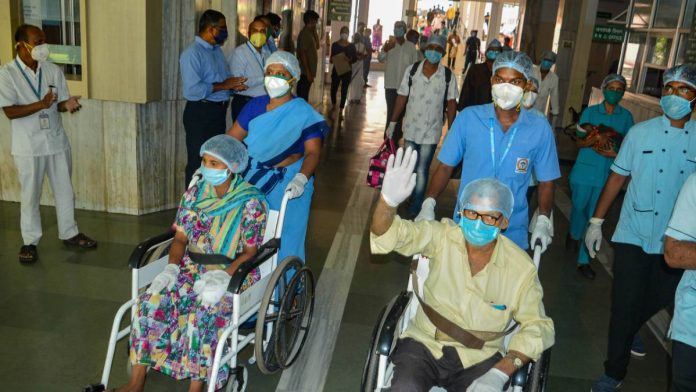What Is Avascular Necrosis, The Latest Post-Covid-19 Condition?

New Delhi: The latest complication among recovered coronavirus patients is avascular necrosis (AVN) or osteonecrosis. At least three cases of AVN were reported in Mumbai’s PD Hinduja Hospital and Delhi’s BLK Super Speciality Hospital respectively.
AVN or ‘death of bone tissue due to lack of blood supply is a degenerative bone condition that existed way before COVID-19. But doctors think this could be the next worrying trend in post-COVID complications. Here is what two specialists, Dr Sanjay Agarwala, head of orthopaedics at PD Hinduja Hospital and the doctor treating the three Mumbai patients and Dr Gauresh Palekar, an orthopaedic surgeon at Jaslok Hospital in Mumbai told Scroll.in about AVN.
What is avascular necrosis?
It is a disease that occurs when the blood supply to the bone is temporarily or permanently cut off, according to Johns Hopkins University School of Medicine. It most commonly affects the ends of a long bone leading to small breaks in the bone and causes the bone’s eventual collapse. It may affect one bone, several bones at one time, or different bones at different times. But most often it affects the hip.
“The cells in the femoral head (the highest part of the thigh bone) die,” Dr Palekar told Scroll.in’s FactChecker. “One of the reasons is loss of blood supply, others are mostly due to steroids, alcohol and sickle cell disease. This can cause avascular necrosis.”
“The patient will complain of pain around the hip or the groin region. It could make it very difficult to walk which could lead to limping in the patient. There is also severe pain around the knee joint, in the lower back and groin making their mobility very difficult. After the onset of COVID-19, the frequency of this disease has been growing rapidly and after mucormycosis it could be one of the biggest challenges,” Dr Palekar was quoted as saying.
Dr Agarwala said referring to this disease as “bone death” (a term used by several news reports) is a bit dramatic. Avascular means that there is no blood whereas necrosis means the death of cells. This phenomenon, which was described in the 1960s, is seen most commonly in the hip and it has got two unique features: one, it is weight-bearing in the joints and the second is that they are hairpin blood vessels that have a greater propensity to block off, said the Hinduja doctor.
Both doctors said they deal with about seven to eight cases of AVN a week. “I deal specifically with this disease so this may not be a representative figure for most orthopaedic surgeons,” said Dr Palekar told Scroll.in.
Sudden spurt in cases
Doctors have observed a sudden rise in AVN cases during the COVID-19 second wave. “We used to have around five AVN patients in a week, but suddenly the number is growing. The commonality here was that they were all survivors of COVID-19. All these patients were receiving life-saving steroids,” Dr Agarwala was quoted as saying.
Not all patients on steroids will develop AVN as it occurs in only those who are sensitive to certain steroids or those who have a predilection for developing AVN.

Comments are closed.